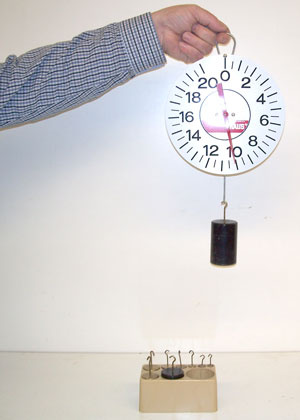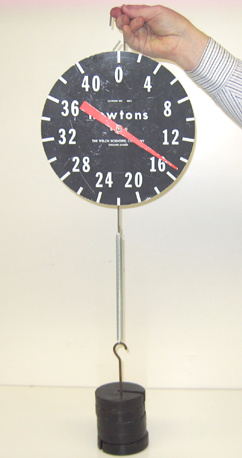Breadcrumb
1J30.22 - Tension in a Spring

|

|
Code Number: 1J30.22
Demo Title: Tension in a Spring
Condition: Good
Area of Study: Mechanics
Equipment:
Spring Scale, spring, large mass or attachment point.
Procedure:
Attach the desired spring to a large mass or attachment point on the bench or wall. Show the tension in the spring as you pull.
References:
- Wen-Tang Lee, Huang-Wen Hsiao, "Tension of a Soft Spring in Contact with a Cylinder", TPT, Vol. 47, # 9, December 2009, p. 596.
- Robert Ehrlich, "C.12, Pulling Two Scales Connected Together", Turn the World Inside Out, p. 34.
- Julius Sumner Miller, Q85 & A85, Millergrams I – Some Enchanting Questions for Enquiring Minds, p. 55 & 106.
1J30.22 - Dr. James Wetzel, PHYS 1611 - Tension in a Spring - Quantify a Force